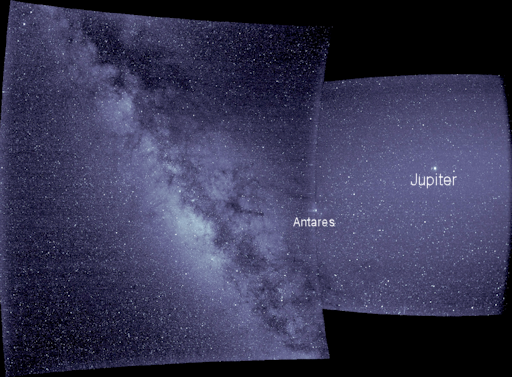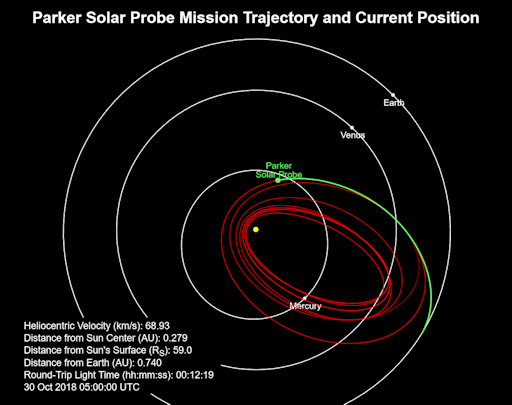NASA gaat de zon 'aanraken' tijdens historische missie

© NASA Goddars Space Flight Center / Flickr
Na jaren van onderzoek gaat ruimtevaartorganisatie NASA naar de zon. Vandaag worden de details bekendgemaakt van de missie met ruimtesonde 'Solar Probe Plus', die volgende zomer de ruimte ingaat.
Op de speciale NASA-website over de Solar Probe Plus wordt al afgeteld naar de lancering van de speciale ruimtesonde. En hoewel de teller nog op 425 dagen staat, is de spanning groot.
1377 graden
De Solar Probe Plus zal namelijk dichter bij de zon komen dan we ooit zijn geweest: op ruim 6 miljoen kilometer afstand. Dat lijkt alsnog heel ver weg, maar dat is zeven keer dichterbij dan een ruimteschip ooit is gekomen. Ter vergelijking: de aarde staat op bijna 150 miljoen kilometer van de zon.
De sonde zal enorm hoge temperaturen en straling moeten doorstaan. Op het punt dat het meest dicht bij de zon staat, krijgt de Solar Probe Plus 1377 graden Celsius te verduren. Het is dus spannend of de sonde de missie zal overleven.
Gevaarlijke stralingsexplosies
Wat er vandaag precies bekend wordt gemaakt, is nog onduidelijk. Maar volgens Rob van den Berg, directeur van Space Expo in Noordwijk, is deze missie erg belangrijk. "Het ruimtevaartuig zal gaan onderzoeken hoe het kan dat de atmosfeer van de zon, vele malen warmer is dan de zon zelf. Daar hebben we in de toekomst veel aan voor de ruimtevaart."
Maar misschien wel belangrijker: onderzoek dat gedaan wordt voor deze missie, kan ons in te toekomst beschermen tegen gevaarlijke situaties. Dat zit zo: "Om de zon heen zit zonnewind", vertelt Van den Berg.
"Die wind bestaat uit allemaal elektrisch geladen deeltjes en die wind kan 'exploderen' en met straling de aarde raken. In 1859 brandden door die extreme straling telegraafpalen door. Ze hadden toen natuurlijk nog geen computers."

Een illustratie van zonnewind (Foto: NASA)
Een explosie van zonnewind nu zou grote gevolgen kunnen hebben. "Als een grote explosie van straling nu de aarde raakt, dan kunnen computersystemen uitvallen. Niet alleen die van je desktop, maar ook bijvoorbeeld in vliegtuigen. Met alle gevolgen van dien. Door het onderzoek van de Solar Probe Plus komen we hier misschien meer over te weten en kunnen we die stralingsexplosies in de toekomst hopelijk gaan voorspellen."
RTL Nieuws / Saskia Nelissen
Vandaag gepresenteerdDe Solar Probe Plus werd al aangekondigd in 2010. Van toen tot nu is er onderzoek gedaan naar de omstandigheden waarin het ruimtevaartuig moet kunnen overleven en is er een speciaal pantser voor de sonde ontwikkeld. Nu is het moment daar waarop het vaartuig bijna de ruimte in mag. De presentatie over de Solar Probe Plus is vanaf 17.00 uur live te volgen via de website van NASA.
https://www.nasa.gov/multimedia/nasatv/index.html#public
Bron: https://www.rtlnieuws.nl/buitenland/nasa-gaat-de-zon-aanraken-tijdens-historische-missie
First light from the Parker Solar Probe.
For more than 400 years, astronomers have studied the sun from afar. Now NASA is actually going there. The Parker Solar Probe, launched last month from Cape Canaveral, is plunging toward the sun for the closest approach any spacecraft has ever made to a star. Researchers hope it will solve mysteries related to the high temperature of the sun's atmosphere and the origin of the solar wind. NASA just turned on some of the spacecraft's science instruments, and "First Light" was spectacular:
NASA: WISPR
This image was taken on Sept. 9th by the probe's wide field imager, WISPR, which combines views from two telescopes located behind the spacecraft's heat shield. On the left we see the Milky Way and the galactic center; on the right, there is Jupiter among the stars of the constellation Libra. WISPR did not look near the sun for this first test, but eventually it will.
WISPR is so sensitive, it can actually see the solar wind, ultimately making 3D images of the sun's inner atmosphere similar to medical CAT scans. The technique, called coronal tomography, is a fundamentally new approach to solar imaging and is only possible because the photography is performed from a moving platform close to the sun, flying through coronal clouds and streamers and imaging them as it flies by and through them. The information WISPR gains could result in dramatic improvements in space weather forecasting.
For more information about the Parker Solar Probe and other instruments on the spacecraft, visit the mission's home page at Johns Hopkins University.
Bron: http://www.spaceweather.com/
De Parker Solar probe is dichterbij de zon dan elk ander ruimtevaartuig in de geschiedenis van de ruimtevaart.
SPACECRAFT MAKES RECORD CLOSE-APPROACH TO THE SUN:
Johns Hopkins Applied Physics Laboratory.
NASA's Parker Solar Probe is now closer to the sun than any other spacecraft in history, shattering the previous record of 26.6 million miles set by the Helios 2 spacecraft in 1976. The probe is now well inside the orbit of Mercury.
"It's a proud moment for our team," says Project Manager Andy Driesman of the Johns Hopkins Applied Physics Laboratory.
Count to 3. Parker just broke the record again. The spacecraft is accelerating sunward for the mission's first perihelion on Nov. 5th. At closest approach, the solar disk will seem 6 times wider than it does on Earth as the probe is hit by "brutal heat and radiation" (NASA's words). Parker's carbon-composite heat shield is expected to heat up to a sizzling 2000 deg. F.
Parker's prime mission is to investigate the origin of the solar wind--a project best done uncomfortably close to the star. Parker will trace the solar wind back to its source and find out how it escapes the sun's gravity and magnetic confinement.
Russell Howard of the Naval Research Laboratory expects to learn a lot from this encounter. "We might detect magnetic islands in the solar wind, which have been theoretically predicted. And if a CME (solar explosion) happens or a comet passes through the sun's atmosphere while we are so nearby, it could be spectacular."

Howard is the principal investigator for WISPR, the probe's wide-field camera system. WISPR can actually see the solar wind, allowing it to image clouds and shock waves as they approach and pass the spacecraft. Other sensors on the spacecraft will sample the structures that WISPR sees, making measurements of particles and fields that researchers can use to test competing theories."We lose communication with the spacecraft during the perihelion period which begins next week," notes Howard. "This is because there isn't sufficient power to drive both the instruments and the transmitter. The first dump of data will occur in early December." Stay tuned for that.
Parker will plunge toward the sun 24 more times in the next 8 years, breaking many records en route.
Bron: http://www.spaceweather.com/

 NASA gaat de zon 'aanraken' tijdens historische missie
NASA gaat de zon 'aanraken' tijdens historische missie




